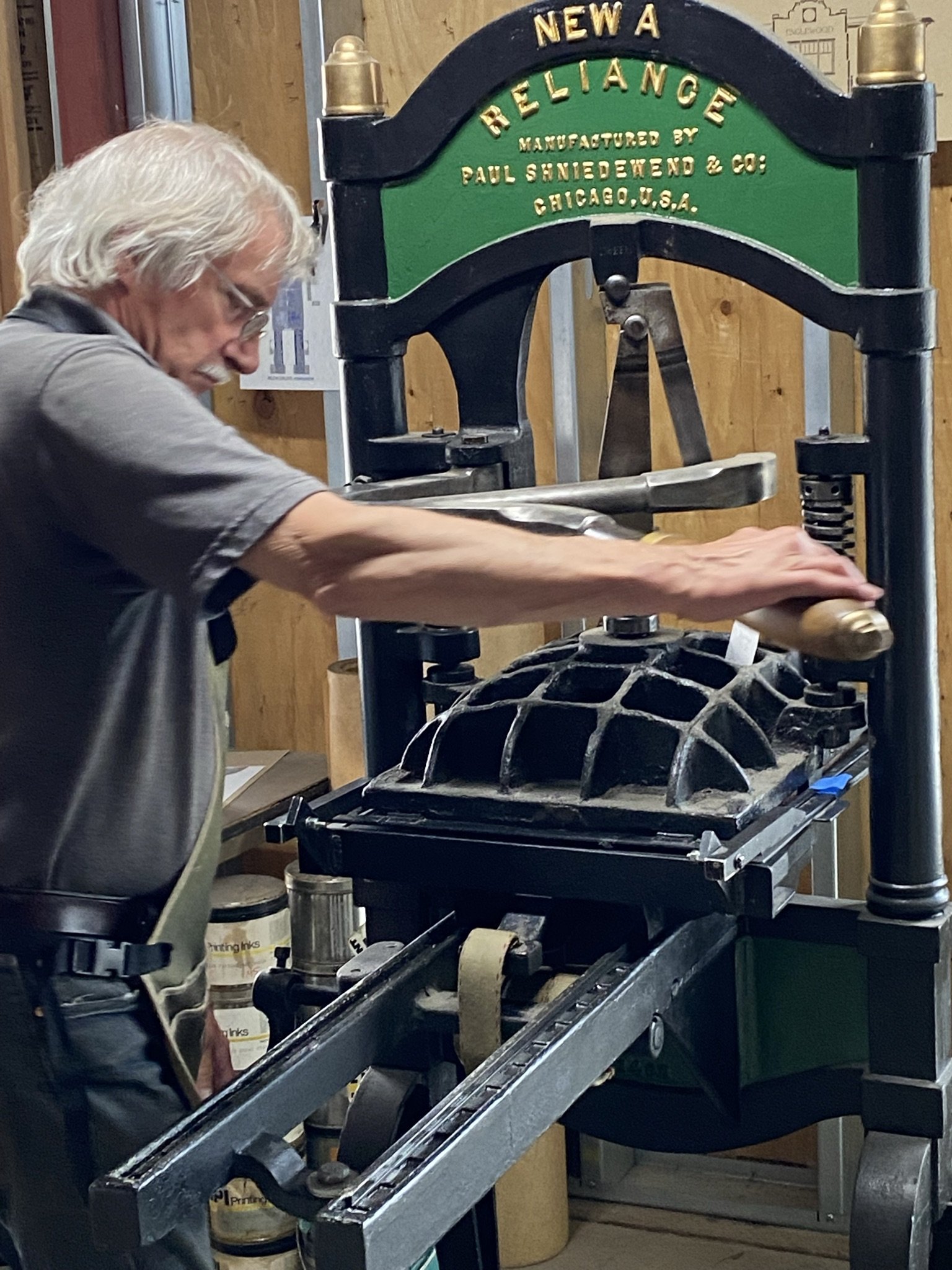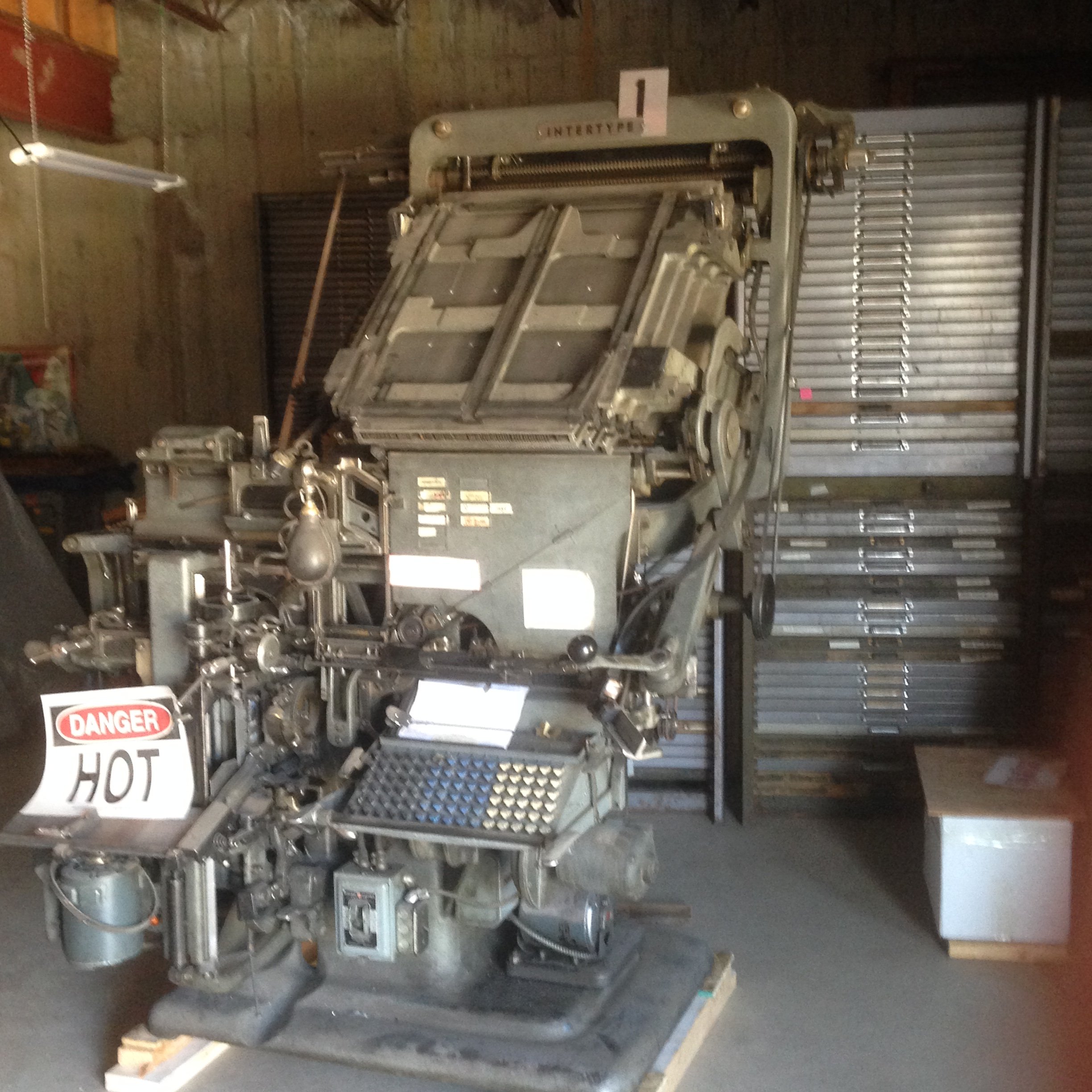Bryan Dahlberg will be printing on the Reliance A model Washington hand press
Reliance iron handpress, Paul Schniedewend & Co, model New A ~1898
The “New A” model Reliance was advertised in 1898 as weighing in at 975 pounds. Schniedewend went on to manufacture a wide variety of Reliance presses from the 10x8 baby Reliance to the 5,000 pound Mastodon. This model have previously been restored by Rob Barnes.
Also at the Depot:
F Wesel iron handpress ~1895
This press, which we were told survived falling out of the fourth story of a building rocked by the 1906 SF earthquake (check the welds), was built by F. Wesel Manufacturing of New York. Wesel and many others turned out these 19th century presses once the original patent held by Samuel Rust and later by R. Hoe & Co expired. It was donated to the Depot by the estate of Jim Grisenti.
Other large presses
Our Heidelberg
Heidelberg Windmill 10x12 Manufactured 1923-85!
From Letterpress Commons: A key feature of the design is the rotating gripper attached to the moving platen, which grips and releases the paper stock. It’s this gripper which has stimulated American owners to dub it “the windmill”. It’s also the reason why the presses have a large metal plate embossed “Original Heidelberg” high on the front. Without it, it’s too tempting to bend over the finished stock to inspect one’s handiwork, only to receive a severe facial injury from the rotating gripper.
Campbell Century Pony newspaper press ~1893
The Campbell Printing & Manufacturing Company produced presses as far back as the 1880s. Its “Century Pony” press came in three sizes: this is its smallest, with a printing area of 22” x 34”. Used in Leadville and later for printing posters for Lakeside Amusement Park, it was donated to the Depot by John Major Jenkins.
Cylinder Presses
Challenge Proof Press
Challenge proof press, 1528KA*
C&P Cylinder Press with paper feeder 10x15* early 1940s
Only 250 of this model were ever made - they had to stop production for World War 2, when all resources were diverted to the war effort. During the war, the company emphasized the connection between printing and democracy. One ad read “Truly truth is mankind’s door to freedom — the printing press the key to that door.” While another said “the printing press, since its origin, has been the one indestructible weapon in man’s struggle for freedom.”
Vandercook 219 AB power (belongs to board member Ian Van Mater’s)* 1948-58
This model also has an adjustable bed. According to the Vandercook Census, there are only six other power carriage models in use, making this a rare find.
Line Casting Machines
Intertype—unfortunately not hot right now!
Intertype C-4
This machine helped put out the Denver Post until they, like most newspapers in the 1970’s and 80’s , moved to phototypesetting and then computer typesetting. You can imagine the operator sitting in their chair, all the news of the day flowing through their keyboard. It is similar in operation to a Linotype machine. The Saguache Crescent still uses their 101 year old Linotype to put out their paper.
Ludlow
A hot metal typesetting system, which casts slugs of type, out of type metal primarily consisting of lead. These slugs are used for the actual printing, and then are melted down and recycled and re-used on the spot. It was used to print large-type material such as newspaper headlines or posters.
Any questions, any interests, any ideas, contact us at englewooddepot@gmail.com, 720-480-5358, @letterpressdepot on Facebook & Instagram, @letpressdepot on Twitter.





